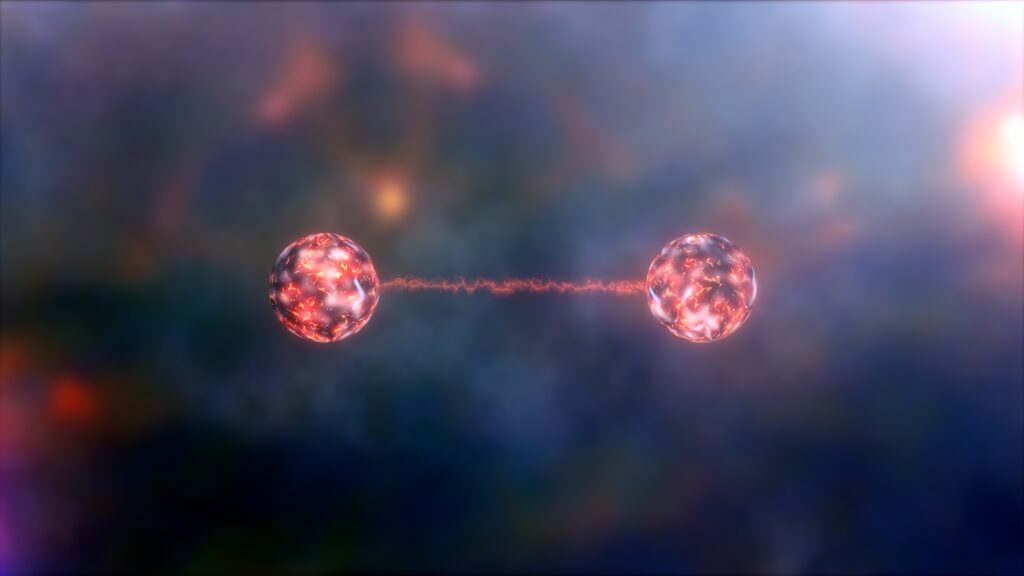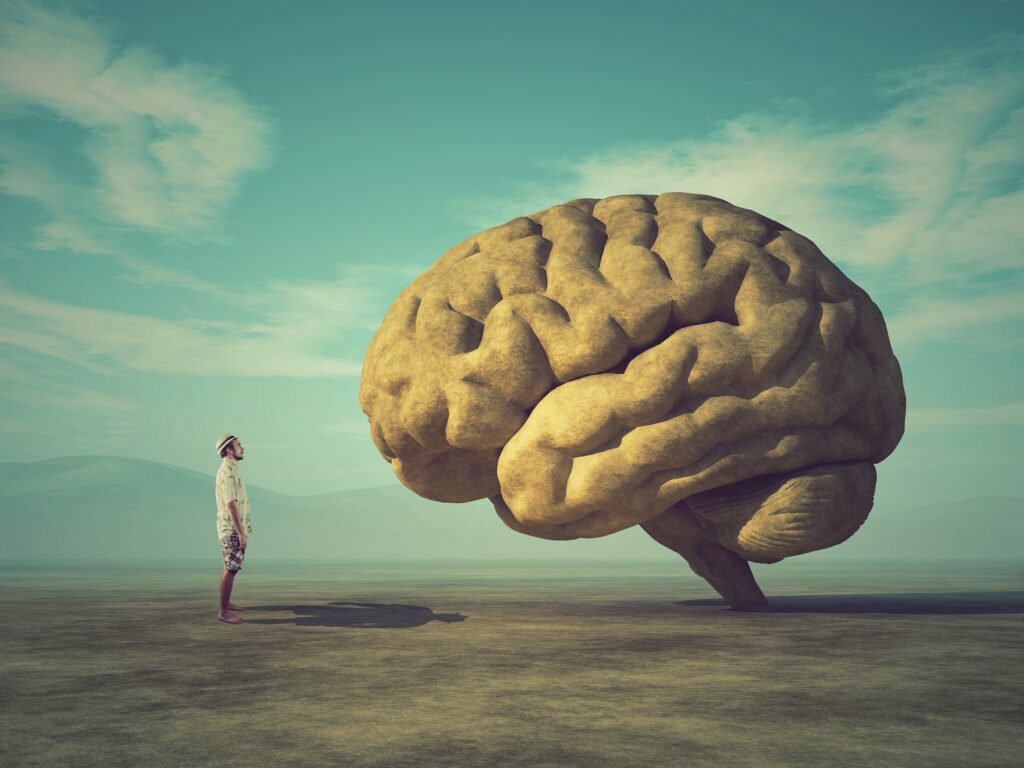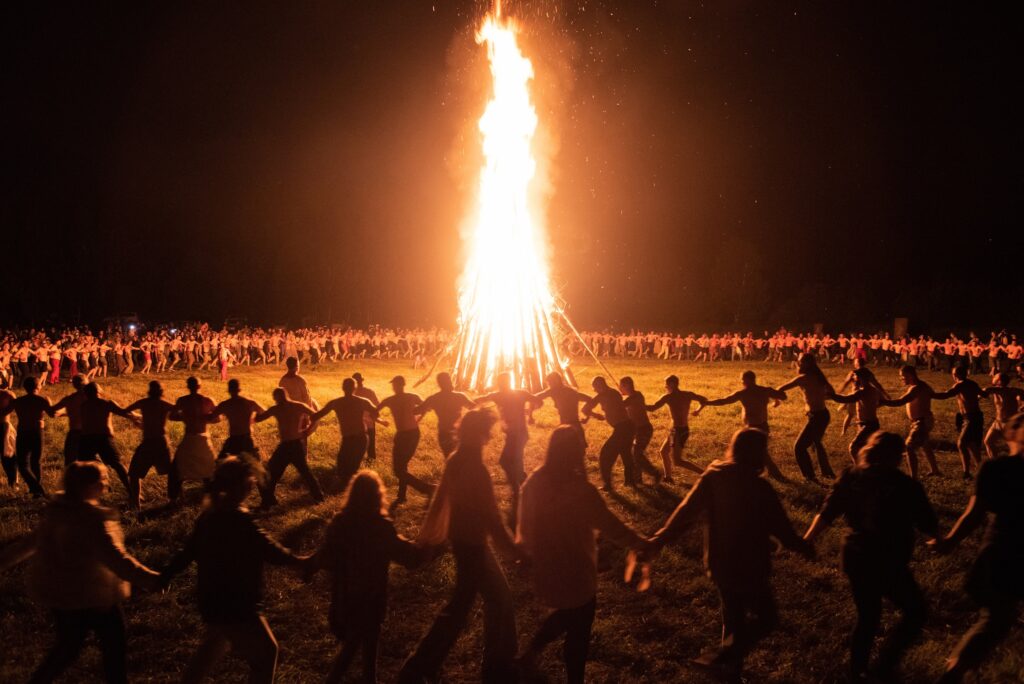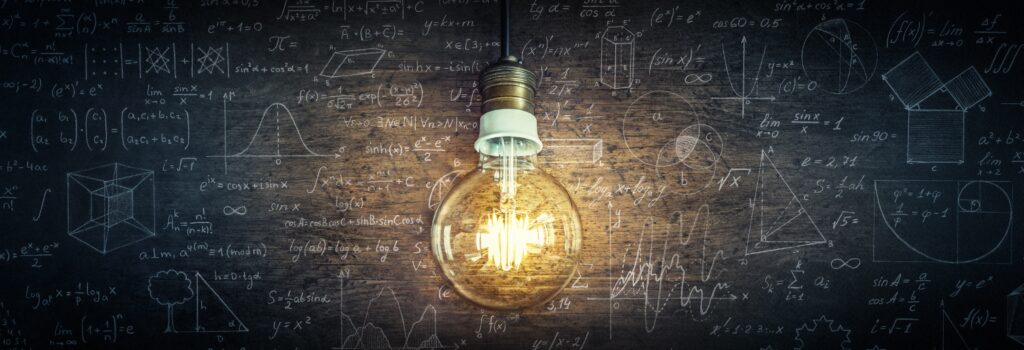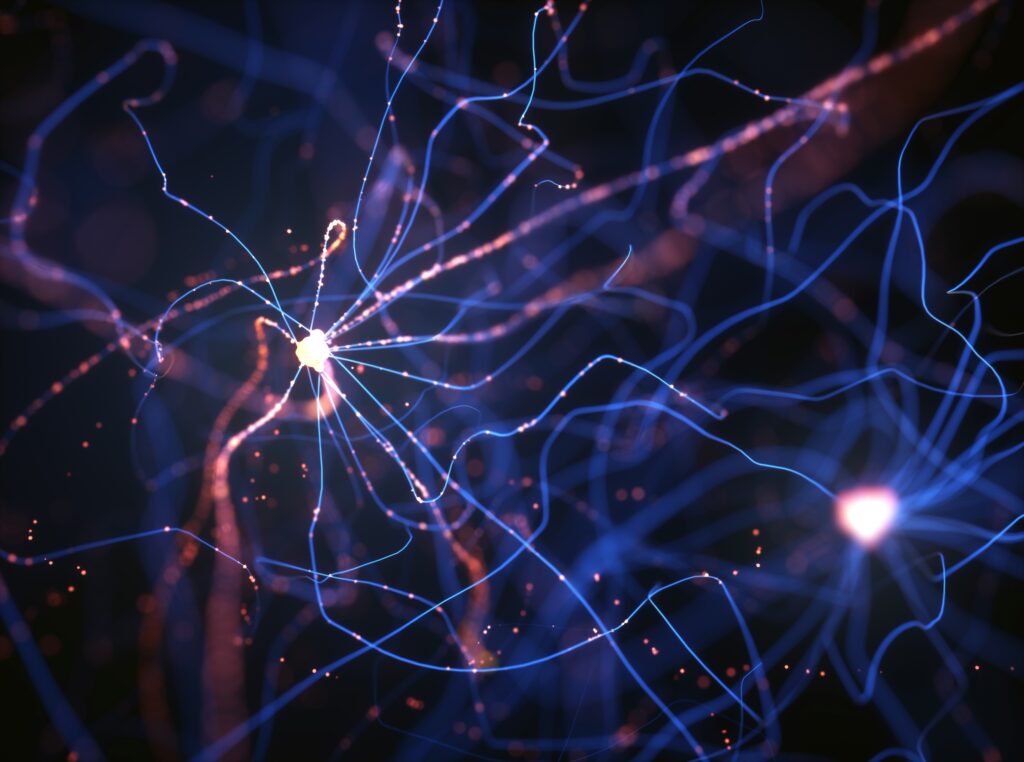Contact with universal consciousness through the research of human mentality
Reading | Psychology
![]() Prof. Victor F. Petrenko, PhD, PhD | 2021-04-23
Prof. Victor F. Petrenko, PhD, PhD | 2021-04-23
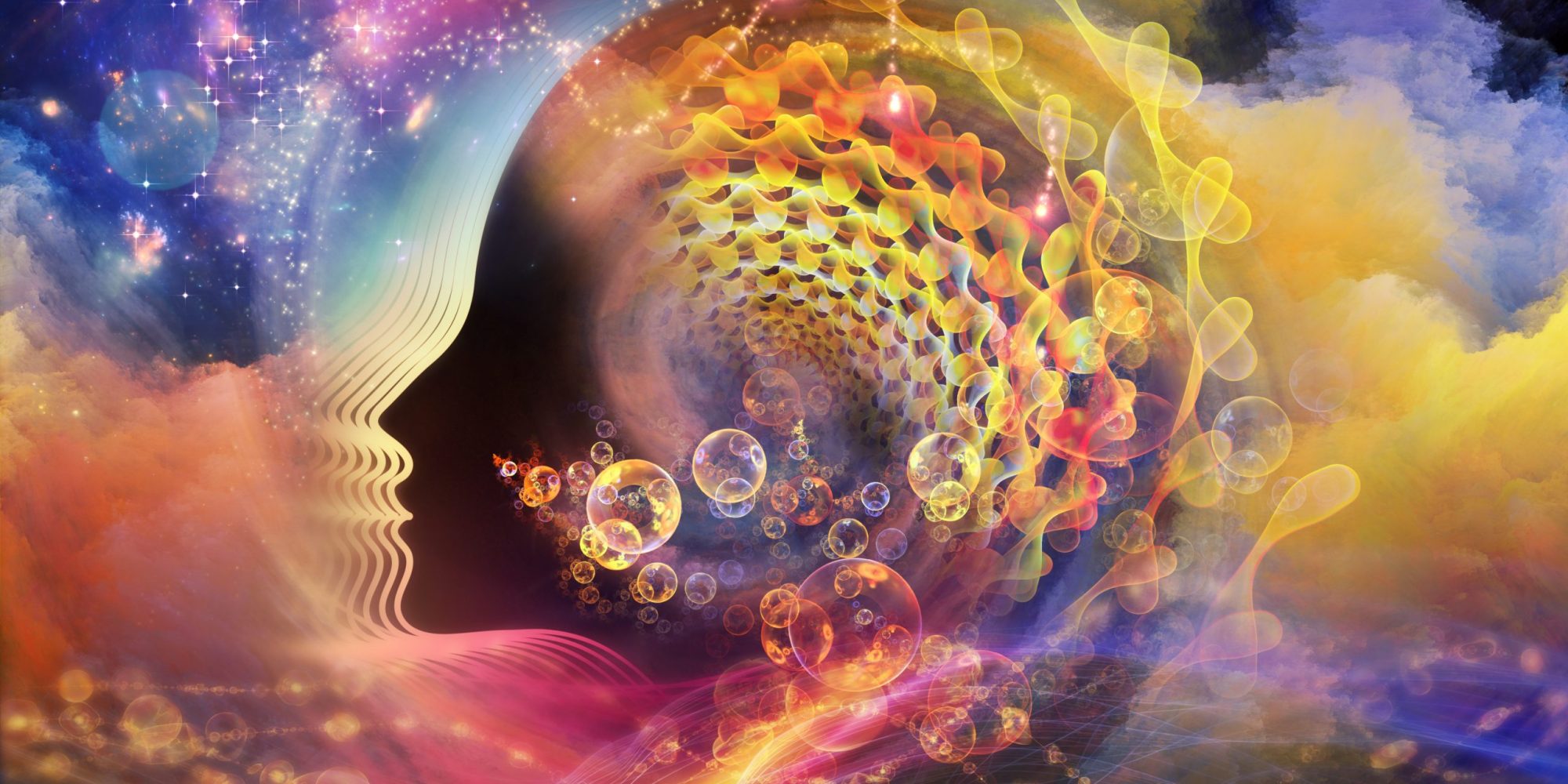
One of the most respected psychologists in the Slavic world—where materialist prejudices are less pronounced—Prof. Victor Petrenko, a member of the Russian Academy of Sciences, discusses his views on the nature of mind and reality. He shows, through remarkable experiments, that our very perception is conditioned upon our ability to tell ourselves, conceptually, what we are perceiving. It is possible that we simply do not perceive what we have no conceptual categories to make sense of. This way, we may be immersed in effectively alien aspects of reality that we cannot cognize. This captivating essay introduces to a Western audience the high-quality—and arguably less metaphysically biased—scholarship of the Slavic world in an area of knowledge whose relevance to our lives cannot be overestimated.
Since its establishment as an experimental science, psychology has gravitated in its cognition towards the Cartesian subject-object paradigm, in which the role of the object has been attributed to the “research subject”—a person—to be studied by objectively measurable methods. And since such methods are scarcely applicable to the inner, spiritual and social life of an individual, the research has been restricted to studying simple physiological reactions, associative processes, and patterns of perception of simple objects. Thus, methods of self-observation and introspection fell by the wayside in psychology. Only with the arrival of psychoanalysis did a branch of science emerge—parallel to the mainstream—that brought forth humanistic and transpersonal psychology, focusing on first-person spiritual experiences.
More recently, however, there has been increasing focus on holistic systems of being and processes that include the human personality as a subsystem in the relationship between human beings, environment, society, history, science, art and spiritual values. And the higher the level of holistic systems is examined, the more complex and less understood are the mechanisms of the regulation and development of the complex whole, in which a human being is embedded.
For example, V. Vernadsky’s speaks of the biosphere and human civilization being a geological factor in the evolution of the Earth’s crust, but also of the reverse influence of geomorphological processes and cataclysms on the emerging noosphere—the realm of human mind. This line of thinking was continued by A. Nazaretyan [36, 38] and V. Panov [41] in the analysis of technogenic crises caused by the disruption of the moral and technological balance, and the impact of the spiritual state of society on nature and industrial progress.
Both the positive and destructive influences of unconscious processes on human psychosomatics are well researched and documented in psychology. And according to religious systems, not just deeds, but evil thoughts alone, influence a human being’s spiritual and physical well-being. Through acts of self-contemplation and repentance we can perhaps experience that influence first-hand. However, all these levels of interrelatedness in complex systems, in which the human being is a constituent part, are poorly studied, reflected or represented in a conceptual psychological framework.
To remain in the field of science rather than religion or art, two comprehensive strategies are possible. The first one is when we adhere strictly to the paradigm of natural sciences and operate with notions underpinned by readily observable phenomena, at the risk of reducing the whole to its fragments. As a result, we would remain blind to the multidimensionality and multi-levelness of the world; for a successfully functioning individual in the everyday life could, at the same time, be bare and helpless against extraordinary existential problems of life and death, or the meaning of life and faith. An alternative strategy would be to construct concepts containing ‘room for growth,’ whereby we accept a degree of uncertainty and gaps in our knowledge. One such notion that could enter the theoretical framework of psychology is the concept of fate, for it has a rich mythological tradition, a complex symbolic representation and a vivid history of conscious expression through artistic means.
Calculations independently carried out by the Russian theoretical astrophysicist A. Panov [40] and the Australian historian-globalist G. Snooks showed a steady acceleration of development across the geomorphological, biological and noospheric stages of the Earth’s evolution. The so-called ‘Snooks-Panov vertical’ revealed a zone of singularity whereby, by about 2045, the curve of the rate of evolution rushes to infinity. What will ensue then: perhaps the end of humanity or, on the contrary, the emergence of the immortal superhuman? Perhaps, given the development of communications technology, humanity will merge into a single super-entity—a kind of earthly version of S. Lem’s “Solaris”?
It seems, however, that the 24-year period from the present day to the hypothetical singularity zone is too short of a time for our transformation into neo-humanity. One possible hypothesis accounting for the phenomenon of singularity could be contact with extra-terrestrial intelligence, which stands to give our civilization access to truly boundless information sources and new treasures of knowledge. What contradicts this hypothesis, however, is the so-called ‘Great Silence of Space’: the absence of reliable signals from our fellow ET ‘brothers in mind.’ Here, perhaps, examples from zoo-psychology and cultural anthropology can provide some insight.
Every living being builds an inner image—a mental model of the world—limited by the perceptual capabilities of its psyche. The higher up the evolutionary ladder it is, the more complicated its image of the world becomes [28]. For example, a mosquito will lay its eggs both on the shiny surface of water—which is biologically appropriate—and on the shiny surface of glass—which is biologically inadequate. A frog, though being higher up the evolutionary ladder, does not have a sufficient degree of neuronal differentiation to distinguish a slow-moving snake from rocks and branches on the forest floor. Such inadequate biologically behavior is due simply to insufficient complexity of cognitive maps, a limited mental representation of the world.
Certainly, the world of a frog is extremely primitive compared to that of a human. But we, too, are limited in our perception by the individual systems of meaning available to us. We mentally construct a representation of the world, which allows us to become aware of it, but only to the extent determined by that very frame of reference we created.
There is an interesting phenomenon of human perception and awareness observed in a study done together with a colleague and student, V. Kucherenko: if you instruct a research subject in a hypnotic state not to see, for example, cigarettes, the subject indeed stops seeing them. Even after coming out of the trance state, when asked to list the items on a table, he or she cannot see not only loose cigarettes, but also an ashtray full of cigarette butts and a pack of cigarettes. The same goes for a lighter, since it is associated with the process of lighting a cigarette. And whenever the subject could see the lighter or a related item, he or she could still not identify it, reporting instead: “Some strange cylinder… I don’t understand… It must be from Validol medication.” Clearly, the mental function related to the forbidden object and other objects associated with it was inhibited, and a whole semantic field of those objects dropped out of perception. It is as if the actions ‘to look’ and ‘to see’ were split up: the research subject saw these objects but was not aware of them due to the hypnotic suggestion.
We investigated systematically the influence of emotions on categorization processes; how certain emotional states changed the internal thesaurus; how semantic spaces were transformed with the emergence of those emotions. We induced, through hypnosis, such simple emotional states as fear, euphoria, guilt, etc., and then watched how the person’s system of associations changed. When confronted with a state that came upon them out of the blue, some people would produce fictional stories to match those states. For example, someone with the induced feeling of guilt explained his condition this way: “During the experiment, someone cheekily opened the door and looked in. I punched him in the eye. It was awkward in a way.” At the end of the experiment, the hypnotist naturally ‘erased’ the induced condition and suggested a pleasant neutral mood, after which the research subject was happy to come back for subsequent sessions.
In the course of this experiment, a kind of matrix was formed, which we then evaluated by using factor and cluster analysis, to see how the semantic spaces were transformed by certain emotions. Using Vygotsky’s terms, we investigated the relationship between “affect and intellect.” Emotional experiences affect, and spiritual experiences play an enormous role in, human perception of the world. Like crooked mirrors, they transform the picture of the world by adding and removing certain fragments.
Here is a prime example from a study I conducted together with V. Kucherenko during the off-site psychological vacation school at Moscow State University. Students lived in a two-person room. A roommate of one of the study participants was interested in observing the hypnosis procedure. To ensure that our research subject would not be distracted by an additional person in the room, we made a hypnotic suggestion precluding him from seeing his roommate. The ‘invisible’ roommate got bored at some point and decided to shave, since he thought that, due to being ‘invisible,’ he could do whatever he wanted. The moment he turned the electric shaver on, our research subject became completely perplexed: he heard the sound that came from the shaver, but he could not see his roommate or the device. Judging by the look on his face, he seemed to be tormented by the incomprehensibility of the situation. Then he stood up and took a few steps toward the source of the sound. The sight of the somnambulist was peculiar enough, so his ‘invisible’ roommate jumped frightened from his seat. The research subject stopped literally a few centimeters from his roommate and fell into a deep trance. Thus, a logical contradiction arose, the collateral result of which was a state of trance: the subject seemed to see his roommate, since he did not try to pass through him; yet, he did not see him, since he could not figure out the source of the noise.
We explain this contradiction through the separation of ‘seeing’ from ‘perceiving.’ So, according to Hegel’s philosophy, in sensations or emotions subject and object are merged, and there is no epistemic opposition between them. But when we express a feeling through symbols—as in language—we commit an act of estrangement from what we directly experience. In this form of symbolic representation, the original experience can be transmitted to another in an act of communication, or to oneself in the form of intra-personal communication, and thus becomes perceived [6]. Consciousness, in this interpretation, is a secondary perception in a semiotic or symbolic form. What can be expressed in a form of a language—understood broadly as a system of meaning in the context of human cultural and historical experience—can be cognized.
Concerning the case of the ‘invisible’ roommate, the research subject saw the ‘forbidden object’—i.e., his roommate—but was not able to become aware of him, because the system of meaning associated with the forbidden object was blocked by the hypnotic suggestion. This conclusion was also supported by our other experiments, in which a hypnotic suggestion led not only to the phenomenon of non-perception, but also blocked both the meaning of the ‘forbidden’ object and a number of other related meanings.
Experiments have also revealed that awareness requires some kind of language through which the very process of awareness occurs. And the more formalized this language is, the clearer, but narrower, in semantic scope is the awareness. So, the language of the unconscious, containing images and symbols, which allows a broad interpretation of what is being perceived, is characterized by a low degree of awareness. Thus, conscious perception of anything requires specific perceptual organs for acquiring information and cognitive structures responsible for recognizing and interpreting it; it depends on the presence of a system of meaning—a kind of language, understood in a broad semiotic sense.
Coming back to the problem of the ‘Great Silence of Space.’ As we know, our bodies contain heavy elements—for example, iron in red blood cells—which originated in distant supernova explosions and were then carried by comets to different parts of the universe, including our solar system. In fact, according to the theory of panspermia by H. Richter and H. von Helmholtz, life itself has a cosmic origin and is transmitted through a kind of cosmic relay from earlier sources. Also, scientists like F. Hoyle and N.C. Wickramasinghe claim that interstellar dust particles contain frozen cells and bacteria [5].
Undoubtedly, it took billions of years for evolution to transform these cosmic embryos of life into highly organized living organisms, possessing a psyche. But if life has a cosmic origin, then it is quite logical to assume that human consciousness, too, developed in the course of cultural-historical evolution, with some kind of involvement of an omnipresent universal mind.
But then why the Great Silence? It is naive to expect that possible alien civilizations are at approximately the same level of development as we are; that they would send us some signals, and that earthlings would successfully decode them; that aliens would arrive in spaceships, perhaps even more advanced than ours, and would make friendly contact.
Over the past 300 years, the Earth’s civilization has undergone unprecedented technological development. And taking into account the acceleration rate shown by the calculations of Snooks and Panov, it is difficult to even imagine what heights our civilization will reach in the near future. Still, 300 years is just a fraction of a moment by cosmic standards.
Cosmonaut S. Krichevsky, who collected interesting evidence of altered states of consciousness during space flights, confidently spoke about how space would be conquered by human beings, that our nearest descendants would settle on other planets in our solar system, and that we would become a space civilization. However, it’s more likely that possible contact with extraterrestrial civilizations will be of a very different kind.
We could start by searching for contact with other worlds in our own mental states; in the sphere of the unconscious, in meditative trance states, and psychology and semiotics can play an important role there. In our recent publications [43, 45] we try to substantiate our opinion that, operationally, human consciousness is anchored in the subject-object paradigm dating back to Descartes, where space and time are present as categories of consciousness or, according to Kant, intuitions of consciousness.
Consciousness, broadly understood as the ability to feel, experience and sense, may have a cosmic origin. In its background forms, it can act as a tuning fork of the Universe, thus evolving and diversifying in earthly conditions to the level corresponding to human consciousness. If the hypothesis of pre-existing consciousness is true, then our ‘brothers in mind’ can be searched not only by launching probes and telescopes into space, but also by meditating, directing awareness inward, deep into our own consciousness, accessing the archetypes of collective and, possibly, universal unconsciousness. This is precisely what the adepts of Buddhism, Hinduism, as well as the practitioners of Sufism and Hesychasm, did, and the difference lies only in the concepts describing the various religious experiences.
The practices of science and religion converge here. The history of religion is imbued with the experience of ‘peak’ states of consciousness [31, 12, 61], which psychology is just coming to understand scientifically. The idea of a pre-existing universal consciousness can be found in Hinduism, whereby the universal consciousness precedes the individual one. While being the underlying background, universal consciousness acts as a ‘carrier wave’ on the basis of which more separate individual consciousnesses form. W. James compared the interrelationship of individual consciousnesses to the roots of trees intertwined in the subterranean darkness, or to the ocean floor that connects the islands to one another. It’s also possible that there is a continuum of universal consciousness in which our divided minds are immersed.
Individual consciousness is restricted, presumably, to avoid possible overload and nervous breakdowns in adapting to the environment. Individual self-awareness—the mechanisms of self-identity—cut the individual off from other people’s consciousness and experiences, which nonetheless sometimes breakthrough in instances of telepathy, hypnosis or synchronicity. B. Porshnev’s hypothesis also supports this interpretation, whereby the emergence of natural languages was due to the need for protection from outside influences by means of a language barrier [49].
In order to consciously perceive something, it is necessary to have peripheral sensory organs, cognitive schemes and standards of recognition. Furthermore, to be aware of what is perceived, it is also necessary to have a certain language—understood in a broad semiotic sense—such as the languages of art. For lack of a number of specific sense organs for perceiving certain stimuli from the outside world, the human psyche contains a number of blind spots. For example, it does not perceive electromagnetic radiation in the range of ultraviolet, including X-rays and gamma rays. It is also insensitive to static magnetic fields and neutrino radiation. In addition, human perception is limited with respect to fast-flowing and super-slow processes.
But apart from the work of the peripheral organs, the process of perception includes the regulating role of cognitive structures of the brain (cf. N. Bernstein [7], P. Anokhin [4]). In scientific terms, these physiological control mechanisms [2] have corresponding perceptual standards, cognitive maps, cognitive schemas, meaning systems and semantic spaces. If the latter two are blocked or underdeveloped, it leads to ‘blindness’ of perception. Different psychological and other forms of training can be used to expand perception, such as: sensitivity training, meditation [9, 56, 8, 39] and auto-training [50, 54], yoga [21, 51, 55], Holotropic breathing [17, 24], methods of sensorimotor psychosynthesis [46,47], hypnosis [53] and soft Eriksonian hypnosis [10], different religious practices, dynamic meditation in the form of monotonous body movements or repetition of mantras, texts having a sacred meaning [19, 18], fasting, prayer [62], contemplation [1, 23, 52], seclusion [11] and retreat [57].
Psycho-practices and meditation not only lower the thresholds of sensitivity, opening up areas previously inaccessible to sensations and inner experiences, but, most importantly, they expand consciousness by removing the subject-object opposition and merging individual consciousness with the universal, transpersonal or divine, if you like.
Some clarification is due here. In philosophy, the concept of consciousness is interpreted broadly, including all the human mental manifestations. However, in psychology, since Freud’s times, it has been common to separate the concepts of ‘the conscious’ and ‘the unconscious,’ whereby the latter includes all we perceive but are unconscious of [3]. According to A. Luria [30], we remember practically everything we have seen during our whole life, which is confirmed empirically by the psycho-technique of passive information extraction [25, 26], whereby the patient can remember, for example, what sandals he or she wore at the age of 2 or the number plate of a car that accidentally caught his or her eye many months ago. In the hypnotic trance state, like in a slow-motion movie, one can see in the mind the moving car and have time to read its number plate if, of course, it was accessible to one’s vision at the moment of primary perception. One can zoom in and out, change the angle, scroll forward and backward in time, i.e., work with it as with the actually perceived object rather than a passive photograph. But in order to grasp what was retrieved from passive memory storage one needs a language, for both the hypnotic suggestion and the described image retrieved from the memory are communicated by means of language. The language of the unconscious, however, opens up an extremely wide range of interpretations. The choice of one or another interpretation of a dream, for example, resembles the process of collapse of the wave-function in physics [42, 32]. The history of the ancient world gives us vivid examples of the Delphic oracles who, in trance under the influence of psychotropic drugs, interpreted the images of their own unconscious in vague utterances. They made obscure and ambiguous prophecies. There is a widely known example of such misinterpreted prophecy: “If a king crosses the river Halys, he will destroy a great empire.” King Croesus of Lydia, preparing for war, misinterpreted this prophecy as a favorable prediction, and as a result he destroyed his own kingdom.
The translation from the language of the unconscious—which uses images and symbols, and presumably contains information about extra-terrestrial intelligence—into a common language requires the development of understanding [64], the analysis of the semantics of images and semiotic research of symbols [29] and the development of the field of psycho-semantics of art [44].
Perhaps the psychology of art, and in particular semiotics of music, will be the Ariadne’s thread that will bring researchers in contact with space. No less important an area for establishing such contact is comparative religion, which studies concrete personal realizations of the transpersonal ‘calls of space.’ The study of altered states of consciousness [60, 27, 58, 15] and transpersonal psychology [16, 17, 33, 34, 60, 13, 20, 24] are also essential in this context.
The race and competition between countries in the field of atomic physics in the twentieth century will be replaced in the twenty-first century by cooperation and collaboration in the humanities, primarily in the fields of psychology, post-non-classical philosophy [59], structural linguistics and semiotics. Contact with extra-terrestrial civilizations, predicted presumably around 2045, will cause an explosion of research problems in the field of humanities, and psychology will emerge as the ‘queen of sciences’ for a certain period of universal history. Also, by devising a specific system of meaning that is not tied to our concrete world on the one hand, and, on the other, by developing sophisticated meditation techniques and psycho-practices, we may come into contact with probable other worlds at deep meditative levels.
* An extended version of this essay was first published in Russian: Petrenko V.F. (2016) Contact with Universal Consciousness through the Research of Human Mentality. Social Sciences and Modernity, No. 5, pp. 142-155.
Bibliography
- Akopov G.V. (2009) Classical and/or non-classical psychology of consciousness // Methodology and History of Psychology. No. 1. pp. 130-136.
- Aleksandrov Y.I. (2008) Emotion and Morality // Methodology and History of Psychology. No. 3. pp. 186-208.
- Allakhverdov V.M. (2009) Consciousness – apparent and real // Methodology and History of Psychology. No. 1. pp. 137-150.
- Anokhin P.K. (1970) Theory of a Functional System // Advances in physiological sciences Т. 1. No. 1. pp. 19-54.
- Astafieva M.M., Gerasimenko L.M., Geptner A.R., Zhegallo E.A., Zhmur S.I., Karpov G.A., Orleansky V.K., Ponomarenko A.G., Rozanov A.Yu, Sumina E.L., Ushatinskaya G.T., Hoover R., Shkolnik E.L. (2011) Fossil bacteria and other microorganisms in terrestrial rocks and astro-materials. Moscow: PIN RAS.
- Bakhtin M.M. (1979) Aesthetics of verbal creation. M.: Art Literature.
- Bernstein N.A. (1990) Physiology of movements and activity. Moscow: Science.
- Chogyal Namkhai Norbu (2009) The Practice of the Long Life of the Immortal Dakini. Shang Shung: Shang Shung Institute.
- Dalai Lama XIV (2010) The Teaching of His Holiness the Dalai Lama XIV for the Buddhists of Russia. An initiation into the Guhyasamaja’s practice. Commentary to the text of Gyalse Togme Zangpo “37 practices of Bodhisattva”. Dharamsala, India.
- Erickson M.G. (1995) My voice will stay with you: learning stories of Milton Erickson. SPb: Peterburg XXI century.
- Feofan the Hermit (2010) Letters on Spiritual Life. Moscow: Father’s House.
- Frager R., Feydiman J. (2008) Personality: theories, exercises, experiments. SPb: Prime-Eurosign.
- Frager R., Feydiman J. (2007) Humanistic, transpersonal and existential psychology: C. Rogers, A. Maslow and R. May. SPb: Prime Eurosign.
- Frankl V. (2009) Ten theses on the personality // Psychology of the personality: Textbook. M.: AST-Astrl. pp. 42, 36-53.
- Gordeeva O.V. (2009) Altered states of consciousness and culture: main problems and avenues of research in modern psychology // Altered states and culture. Reader St. Petersburg: Peter. pp. 4-28.
- Grof S. (2005) Beyond the Brain. Birth, death and transcendence in psychotherapy. Moscow: AST.
- Grof S. (2007) The Greatest Journey. Consciousness and the mystery of death. Moscow: AST.
- Jainism. Sikhism. (1996) Moscow: The Republic.
- Horužij S. (1993) Hesychasm and History. Source: Civilizations. Vol. 2. M.: Science.
- Hunt G. (2004) On the Nature of Consciousness. Cognitive, phenomenological and transpersonal perspectives. Moscow: AST-Institute of Transpersonal Psychology, K. Kravchuk Publishing House.
- Iyengar B.K.S. (2010) The Light of Life: Yoga. Moscow: ANF.
- James W. (1993) The diversity of religious experience. Moscow: Science.
- Karitsky I.N. (2011) Psychological practices of internal contemplation of reality // Contemplation as a modern scientific-theoretical problem. Samara: Volga State Social-Humanitarian Academy. pp. 112-126.
- Kozlov V. V., Maykov V. V. (2004) Transpersonal psychology. Origins, History, Current State. Moscow: Institute of Transpersonal Psychology.
- Kucherenko V. V. (1996) Technique of explication of the unconscious knowledge // Personality – as a subject and object of modern life. Smolensk: Smolensk State University. pp. 214-221.
- Kucherenko V. V. (1997) A Method of Retrieving Information from the Passive Memory Inventory // Methods of Psychology. Collection of scientific works. Rostov-on-Don: Rostov State University. Vol. 3, pp. 155-158.
- Kucherenko V.V., Petrenko V.F., Rossokhin A.V. (1998) Altered states of consciousness: A psychological analysis // Problems of psychology. No. 3. pp. 70-78.
- Leontiev, A.N. (1981) Problems of development of the psyche. Moscow State University.
- Lotman Yu.M. (1992) Culture and explosion. Moscow: Gnosis.
- Luria A.R. (1968) A little book about big memory. Moscow State University.
- Maslow A.G. (1999) Motivation and Personality. SPb: Eurasia.
- Mensky M.B. (2007) Man and the quantum world. Strangeness of the quantum world and the mystery of consciousness. Fryazino: Century 2.
- Mindell A. (2011) Quantum mind: the edge between physics and psychology. Moscow: Belovodie.
- Murphy, M. (2009) The future of the body. A study of further human evolution. M.: The open world.
- Nazaretyan A.P. (2001) Civilizational Crises in the Context of Universal History. Moscow: PERSE.
- Nazaretyan A.P. (2003) History and Psychology of Anthropogenic Crises, Hypothesis of Techno-humanitarian Balance // Proceedings of the Interdisciplinary Seminar of the Club of Scientists “Global World”. Moscow: The Institute of Microeconomics.
- Nazaretyan A.P. (2008) Anthropology of violence and the culture of self-organization. Essays on evolutionary-historical psychology. Moscow: URSS.
- Nazaretyan A.P. (2021) Nonlinear Future. М.
- Nida Chenagtsang (2010) Meditation of the Medicine Buddha surrounded by four Dakinis. Ulan-Ude: Yutok Ling.
- Panov A.D. (2008) Universal evolution and the problem of searching for extra-terrestrial intelligence (SETI). Moscow: LKI.
- Panov V.I. (2006) Introduction to Ecological Psychology: Tutorial. M.: Research Institute of School Technologies.
- Penrose, R. (2005) Shadows of the mind. In search of the science of consciousness. Moscow-Izhevsk: Institute for Computer Research.
- Petrenko V. F., Suprun A. P. (2015) The methodology of psychosemantics in the context of the philosophy of post-non-classical rationality and quantum physics // Vestnik RAN. Т. 85. No. 10. pp. 896-905.
- Petrenko V.F. (2014) Psychosemantics of art. Moscow: Moscow State University.
- Petrenko V.F., Suprun A.P. (2017) Methodological Intersections of Psychosemantics of Consciousness and Quantum Physics. Moscow: St. Petersburg, (2nd edition, supplemented).
- Petrenko V.F., Kucherenko V.V. (2007) Meditation as unmediated cognition // Methodology and History of Psychology. No. 1. pp. 164-189.
- Petrenko V.F., Kucherenko V.V. (2019) Theory and practice of sensorimotor psychosynthesis. Herald of the Russian Academy of Sciences. 2 Т. 89. No. 1. pp. 56-64.
- Pomerantz G.S. (1994) Russian Wealth. No. 2 (6). Journal of one author.
- Porshnev B.F. (1979) Social psychology and history. M.: Science.
- Psychotherapeutic Encyclopedia (1999) St. Petersburg: Peter.
- Sai Baba, S. (2009) Yoga and meditation. Moscow: Amrita Rus Publishing.
- Shestun G. (Hegumen Georgiy), Podorovskaya I.A. (2011) Holy Father’s understanding of contemplation // Contemplation as a modern scientific-theoretical problem. Samara: Volga Region State Social-Humanitarian Academy. pp. 95-112.
- Shoifet M. (2006) Unrevealed Secrets of Hypnosis. Moscow: Ripol classic.
- Shoifet M.S. (2010) Psychophysical Self-regulation. Great modern practice. M.: Veche.
- Sidersky A. (1998) Yoga of Eight Circles. Kiev: Nika-Center.
- Sivananda Swami. (2001) Meditation on OM. Moscow: Sofia.
- Sopa Rinpoche Lama (2012) What are gates for? (http://savetibet.ru/2012/10/09/lamazopa_rinpoche.html).
- Spivak D.L. (2000) Altered states of consciousness: psychology and linguistics. SPb: Juventa Publishing House.
- Stepin V.S. (2003) Self-developing systems and post-non-classical rationality // Philosophy Issues. No. 8. pp. 5-17.
- Tart Ch. (2003) Altered states of consciousness. M.: Eksmo.
- Torchinov E.A. (1998) Religions of the world: the experience of the transcendental. Psychotechniques and Transpersonal States. St. Petersburg: St. Petersburg Center for Oriental Studies.
- Vasilyuk F.E. (2005) Experiencing and prayer (practice of general psychological research). M.: Sense.
- Vygodskaya G.L. (1996) What was he like // Psychology Issues. No. 5. pp. 122-133.
- Znakov V.V. (2005) The psychology of understanding: problems and prospects. Moscow: Institute of Psychology of the Russian Academy of Sciences.

Essentia Foundation communicates, in an accessible but rigorous manner, the latest results in science and philosophy that point to the mental nature of reality. We are committed to strict, academic-level curation of the material we publish.
Recently published
Reading
Essays
Seeing
Videos
Let us build the future of our culture together
Essentia Foundation is a registered non-profit committed to making its content as accessible as possible. Therefore, we depend on contributions from people like you to continue to do our work. There are many ways to contribute.






